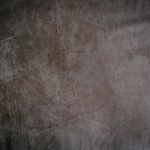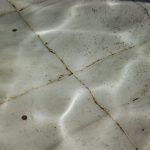To clean white or light-colored suede, start by brushing off loose dirt gently with a soft suede brush. Use a suede eraser on small stains, and treat tougher spots by blotting oils quickly, then applying cornstarch to absorb them. Let mud dry fully before brushing it away. Avoid soaking; instead, use a lightly damp cloth with distilled water on water stains. Follow these steps to keep your suede fresh, and there’s more to learn about restoring its soft texture and protecting it long-term.
Table of Contents
Key Takeaways
- Gently brush the suede with a soft-bristled suede brush to remove surface dirt without damaging the nap.
- Use a suede eraser or clean white pencil eraser to carefully rub away light stains and scuffs.
- For oil stains, blot excess oil, then apply cornstarch or talcum powder to absorb it before brushing off.
- Treat water spots by gently rubbing with a cloth dampened in distilled water using circular motions.
- After cleaning, apply a protective suede spray to repel moisture and prevent future stains on light-colored suede.
Understanding the Characteristics of Suede Fabric
Although suede fabric looks delicate, it offers a unique texture that feels soft and luxurious to the touch. When you handle suede, you’ll notice its nap—a fuzzy surface created by buffing the underside of animal hide.
Suede’s soft, luxurious texture comes from its distinctive nap, a fuzzy surface crafted by buffing animal hide.
This nap gives suede its distinctive appearance but also makes it sensitive to moisture and stains. You’ll want to treat it gently because its porous nature absorbs liquids quickly, which can cause discoloration.
Unlike smooth leather, suede doesn’t have a protective coating, so it’s more prone to dirt and marks. Understanding these characteristics helps you appreciate why cleaning suede requires care.
If you know how it behaves, you’ll be better prepared to maintain its beauty without causing damage.
Essential Tools and Materials for Cleaning Suede
Cleaning suede requires the right tools and materials to keep its delicate texture intact.
You’ll need a suede brush with soft bristles to gently lift dirt and restore the nap. A suede eraser or a clean white pencil eraser works well to remove small stains and scuffs without damaging the fabric.
For tougher stains, have a suede cleaner or a specially formulated suede detergent on hand. Avoid using water directly, as it can cause spots.
Additionally, keep a clean, dry cloth nearby to blot any excess moisture or cleaner. Using a protective suede spray after cleaning can help repel dirt and water, maintaining your suede’s appearance longer.
Having these essentials ready guarantees you clean your suede safely and effectively.
Preparing Your Suede Item for Cleaning
Before you start cleaning, make sure your suede item is dry and free of loose dirt by gently brushing it with a suede brush. This helps prevent dirt from embedding deeper during cleaning.
Next, check for any stains or spots and note their locations so you can treat them carefully later. Avoid using water at this stage, as moisture can damage suede.
Find a well-lit area to work in so you can clearly see the fabric’s condition. Lay your suede item flat on a clean, dry surface to keep its shape intact.
Finally, gather all your cleaning tools nearby to avoid interruptions. Taking these steps prepares your suede properly, ensuring a more effective and safe cleaning process.
Removing Surface Dirt and Light Stains
Start by gently brushing your suede with a soft-bristled brush to lift surface dirt without damaging the fabric.
If you spot light stains, a suede eraser can work wonders by rubbing them away carefully.
These simple tools help keep your suede looking fresh and clean.
Gentle Brushing Techniques
Although suede is delicate, you can easily remove surface dirt and light stains by using gentle brushing techniques.
Start with a soft-bristled suede brush or a clean, dry toothbrush. Always brush in one direction to lift dirt without damaging the nap. Avoid scrubbing back and forth, as it can roughen the fabric.
For stubborn spots, gently raise the nap by brushing lightly in different directions, but don’t overdo it. Before brushing, verify the suede is dry; brushing wet suede may cause stains to set.
Regularly brushing your suede helps maintain its texture and appearance, preventing dirt buildup. With consistent care using gentle brushing, your white or light-colored suede fabric will stay fresh and look its best over time.
Using Suede Erasers
Two essential tools for tackling surface dirt and light stains on suede are suede erasers and cleaning blocks. You gently rub the eraser over the affected area to lift dirt without damaging the fabric. Use short, controlled strokes, and don’t press too hard to avoid leaving marks. After erasing, brush the suede softly to restore its texture.
| Tool | Best For |
|---|---|
| Suede Eraser | Small stains, scuff marks |
| Cleaning Block | Slight discoloration, dirt |
| Combined Use | Stubborn stains, overall refresh |
Remember to test these tools on an inconspicuous spot first. With regular care, your white or light-colored suede stays fresh and vibrant.
Tackling Tough Stains on White or Light-Colored Suede
When dealing with tough stains on white or light-colored suede, you’ll need to act carefully to avoid damage.
Oil-based stains require special attention, while water and mud stains call for different cleaning methods.
Let’s explore how to tackle these stubborn marks effectively.
Removing Oil-Based Stains
Since oil-based stains can deeply penetrate suede fibers, tackling them quickly is essential to prevent permanent damage, especially on white or light-colored suede where stains are more visible.
First, gently blot the stain with a clean, dry cloth to absorb excess oil—avoid rubbing, which spreads the stain.
Next, sprinkle cornstarch or talcum powder over the affected area and let it sit for several hours or overnight; these powders absorb oil effectively.
Afterward, brush off the powder using a soft suede brush, restoring the nap.
If the stain persists, apply a small amount of suede cleaner following the product instructions, then brush again.
Always test cleaning products on a hidden spot first to avoid discoloration.
Prompt action and proper care keep your suede looking fresh.
Treating Water and Mud
Oil-based stains demand quick attention, but you also need a careful approach for water and mud marks, especially on white or light-colored suede where they stand out.
First, let the mud dry completely—trying to wipe it wet only pushes the stain deeper. Once dry, gently brush the area with a suede brush to loosen and remove the crust.
If water spots remain, dampen a clean cloth slightly with distilled water and lightly rub the stain in circular motions. Avoid soaking the suede, which can cause damage.
Afterward, blot the area with a dry cloth and let it air dry away from direct heat.
Finally, restore the nap with your suede brush, brushing in one direction to keep the fabric looking fresh and uniform.
Restoring the Nap and Softness of Suede
Although suede requires careful handling, you can easily restore its nap and softness with the right tools and techniques.
After cleaning, the texture might feel stiff or flattened, but don’t worry. Here’s what you can do:
- Use a suede brush or a soft toothbrush to gently lift the nap. Brush in one direction to avoid damaging the fabric.
- Lightly steam the suede from a distance to relax the fibers, then brush again to revive the texture.
- For stubborn areas, rub them gently with a clean, dry eraser designed for suede to remove any remaining dirt and fluff up the surface.
With these simple steps, your suede fabric will look and feel soft and fresh again in no time.
Preventative Care and Maintenance Tips for Suede
Keeping your suede looking soft and fresh after restoring its nap depends largely on how you care for it going forward.
Always protect your suede by applying a water and stain repellent spray designed specifically for suede. Avoid wearing suede in wet or muddy conditions to prevent damage.
When storing, keep it in a cool, dry place away from direct sunlight to prevent fading and drying out. Regularly brush your suede with a soft suede brush to remove dust and maintain its texture.
If you spot dirt or stains, address them promptly using appropriate suede cleaning tools or solutions. Finally, avoid contact with oils or lotions, as these can stain the delicate fabric.
With consistent care, your suede will stay beautiful and last longer.
Frequently Asked Questions
Can Suede Be Machine Washed or Dry Cleaned Safely?
You shouldn’t machine wash suede since water damages its texture. Dry cleaning can be safer, but make sure to use a professional who specializes in suede to avoid ruining your garment’s delicate surface and appearance.
How Do I Store Suede Shoes to Prevent Damage?
You should stuff your suede shoes with tissue paper to maintain their shape, keep them in a cool, dry place away from direct sunlight, and store them in breathable bags to prevent moisture buildup and damage.
Are There Specific Weather Conditions to Avoid Wearing Suede?
You should avoid wearing suede in rain, snow, or extremely humid conditions because moisture can stain and damage it. Stick to dry, mild weather to keep your suede looking fresh and prevent water spots or warping.
Can I Use Regular Shoe Polish on White Suede?
Sure, go ahead and paint your white suede with regular shoe polish—if you want a permanent abstract art piece! Seriously, don’t use it; it’ll ruin suede’s delicate texture and color. Choose suede-specific products instead.
How Long Does It Take for Suede to Dry After Cleaning?
Suede usually takes about 12 to 24 hours to dry completely after cleaning. Make sure you let it air dry naturally, away from direct heat or sunlight, so it doesn’t get damaged or stiff.
- Does Chiffon Fabric Stink - July 15, 2025
- Does Chiffon Fabric Affect the Economy - July 15, 2025
- Does Cotton Fabric Have a Nap - July 15, 2025







